As humans grow apart from their natural rhythms, the need to rescue primordial knowledge feels like an absolute necessity.
When thinking of channeling ancient wisdom into contemporary landscapes, Wardruna stands as a beacon.
Drawing inspiration from ancient oral traditions and nature, Selvik explores the reconnection with our surroundings and the sacredness of nature. In this interview, we understand how Wardruna’s music invites listeners on a journey of introspection, challenging contemplation, and exploration – of both internal and external landscapes – and our role within these dimensions.
We can say that it’s within simplicity and knowledge, that Wardruna’s music stands – a testament to the power of ancient wisdom in the modern world.
You mentioned before that this record is inspired by oral tradition and the importance of the written word in an oral society. What is missing from the present that you think could be brought back from the past?
Many things, and that is kind of what Wardruna has always been about; that is, giving voice to things from the past that I think are worth remembering, you know? There are many things from the past that don’t really carry any meaning anymore other than being interesting stuff of course, but there are many things that are worth remembering. And of course, our music is very much about our connection to nature and something that is bigger than yourself, however, you choose to define that, doesn’t have to be a spirit or a religious thing. And I would say, if I have to say one thing that is worth remembering from past traditions and is kind of overarching everything we do, it’s this very simple idea that nature is something sacred. And the second we took the sacredness of nature and totally disregarded it for whatever reason, and this started to happen a long, long time ago, I think everything became problematic. And so, I guess if my music does have a message, it would be that the importance and the benefit for all of us to start regarding nature as something sacred, something we are part of and not the rulers of, but rather the guardians of, I think that would help us all. And that has nothing to do necessarily with spirituality; it’s an attitude, you know? Just respecting our surroundings and respecting the fact that we are part of something that deserves equally the amount of respect that we demand in a way, so it’s a very simple idea.
“I guess if my music does have a message, it would be that the importance and the benefit for all of us to start regarding nature as something sacred, something we are part of and not the rulers of, but rather the guardians of, I think that would help us all.”
This next question somewhat relates to this theme. As I was listening to the record, I truly felt like it was a tribute to nature and how we should reconnect with it and ourselves. Being aware that you use nature as part of your creative process, do you think of it as a cathartic experience?
Yeah, it can be. But you know, for me it’s… I try to leave everything very open-ended, you know? You can have your version; there isn’t a rule on how you should perceive my songs. And the way I work with the lyrics and all, I try to keep it more like questions in a way, or riddles, that provokes your own thoughts and there is room for you to find your way of connecting to these things, which I think it’s a better way of learning. At least it’s how I feel. When I studied runes or runic poetry or stuff like that, the thing I love about it it’s that it’s basically just like riddles, some of these short lines that just leave you with a thousand questions, and questions are a very fruitful thing in this world. To ask questions and deal with them, it sort of insights loads of inspiration potentially. Does that answer your question?
I think it does, I think maybe the creative process comes more from the things that you learned.
Oh, you meant the creative process! Yeah, well, of course that there are both active ways I work with connecting to the themes I’m working with or to specific things in nature. And there’s also more inactive ways. You know, sometimes the absence of nature can bring me closer to it. Because then there is an element of longing, which is a very powerful creative tool. So, it’s not only nature itself. It’s the friction, my longing for it or reflecting on society itself. How removed we are from it and tapping into that longing. But also of course I apply older traditions which are more in terms of specifically going out asking for a connection to certain things where you suddenly tune into it, in a more intuitive or… some would say a spiritual way or whatever you wish to call it. Where you try to tap into whatever it is working with. So nature is of course a big part of that.
How do you bring that experience, or the lack of it, to the studio and construct the puzzle that is creating music?
Inspiration can come from many different things. And one of my main uses as a composer is to walk, that’s very often when I hear it or see it. So, I don’t write scores and stuff like that, I don’t work like that. And sometimes it comes from working with the instruments or certain poetry that comes from being out walking. Sometimes the themes are so strong in how I connect with them or how that image is that I just hear it. And then it’s about going into the studio and chasing down that vision. And I guess that’s what I’ve been doing the last twenty years; chasing after this vision I have of music. And I guess I feel that for each time around, for each album and for each experience, I come a little bit closer to matching that vision, in a way.
It’s very interesting because I’m very connected with nature as well, and now I’m very far from my little forest. And your music brings me back to that feeling that I’m among nature and I think that’s very, very special. That’s why I’m so curious about your process because you can bring me back to that place.
You know, culture, whether it’s Nordic culture or other, older cultures that are nature based in a way, in their origin is… Well, they are shaped out of our surroundings and our resources and the people living there, etcetera. That is what gives it direction and shape, basically. So, even though my stuff has the Nordic wrapping around it, the mechanism is identical to wherever you are on this planet. If you go far enough back in time, you see just how connected even the ideas behind it are. And even the tonalities and the rhythmical patterns, if you go far enough back in time, they are present, they are almost global. And, since they also are so ancient, I have a theory or think that they are in our DNA in a way, that hearing them and being part of them sort of awakens things that, well, always were there. You just didn’t know it, in a way. So, it allows that bridge. And of course, nature… This is what shapes my vision of it as well, you know? So, it’s a good thing that I succeed in putting it into my music as well.
Regarding Kvitravn, it has a looming obscurity tangent to it. The song “Grá”, in my opinion, is a reminder of the equilibrium of nature, and how that is maintained by a necessary evil: death. What are your thoughts on this?
Yeah, of course, that’s a big part of it. But that necessary evil doesn’t need to be death either, you know? It taps into this almost universal law that anything of true value has a true cost. And using our relationship with the wolf is a very good picture of just that. Like, here in Norway we basically extinct all wolves because they were so inconvenient. We didn’t take into account their value because we lost our connection to nature. And, of course, when you take away one piece of an ecosystem, it doesn’t just affect the wolf; it affects the plants, many other species. We have several other species that are dying out now because there are no wolves there. Nobody’s talking about that. But as long as we get to farm and can go into the forest without being scared, we’re sort of happy. We don’t want to think about those things, but the truth is, it has a value. It has a profound value and we should be willing to pay that cost, even though it’s inconvenient and problematic. Just killing them doesn’t solve a problem, it creates many new problems actually. So, it is not romanticizing this idea that, “oh, the wolves are so beautiful so we have to give them…”, no. There are other reasons why we have to keep them. Because they are essential, they are as well as we are essential too, and other bits in the puzzle. So, it kind of uses the wolf as an image for that. And I also think it’s a healthy thing to go into the forest and be a little scared. I think you would be… I think there would be less depressed people and so on if we were connected to those primal feelings of ‘you have to actually know what you’re doing: you have to think, you have to be aware’. It would heighten the quality of life, I think.
And even the mystery of not knowing what can happen.
Yeah! Being inside a fluffy bedroom… You know, comfort zone is not a healthy thing. That’s not where you grow. You always have to step outside the comfort zone if you want to grow. So, it’s a song that has so many layers on top of it, you can put it into so many different parts of our relationship to ourselves and the lives we lived and also our relationship to nature, not only the wolf. It’s a very clear-cut image of many different things.
Since the beginning of Wardruna, I noticed an increasing effort in producing videos with a very particular aesthetic. What made you want to invest in that visual aspect of music?
Well, it’s something I’ve wanted to do since the very beginning, actually. But I didn’t want to do it halfway. So, therefore, I didn’t do it before, because I didn’t have the means to invest into doing it on a high level with the best people and to be able to put a face to my visions and the music, and so on. So, I guess there were only practical reasons for it not being present at an earlier stage. It’s always sort of been a part of my vision for Wardruna and it’s also something I want to continue developing. I think it’s a great way of connecting to the songs in a different way. And, we as humans, we are really visual in how we connect to things. And so, I think it makes sense, basically, to do it. And I really enjoyed it.
And it’s an opportunity to show your vision, not in a different way, but in a more overall sense.
Yeah! And you know, of course, lyrics will add one dimension to it. Adding a face will add another aspect to it where you can play with different symbolism and highlight different things. Other than what you are actually saying. So, it’s basically an extra dimension, which is really fun to work with. It’s the same thing as performing live; you connect as a musician, you connect to the song in a different way, and as an audience you connect to the song in a different way. It’s a dialogue, you know? So, that’s also adding another dimension to it, in the same way as a video does.
I had the opportunity to see you live in Manchester two years ago and I noticed the simplicity and attention to detail, from the clothing to the overall show presentation – elements that are also present in the artwork. Where do those ideas come from and how do you incorporate them into a record?
Well, in terms of the live concert, I want to keep it simple. I don’t want it to be like this circus because adding more isn’t always adding more, if you know what I mean. The focus is on the performance and not the package, in a way. Connecting with the songs and connecting with them together with us, on stage. The visual aspect of Wardruna and how I implement them into the albums is… I don’t know, that’s something that’s always been part of the project. Even before I recorded, I was working on lots of these visual ideas for how to work with it. And at the same time, I think that you know the simplest things if you… Like, the way we do our covers. It’s a really simple concept, where you have a texture that represents the content of the album and then you have the sign of the rune displayed in a different texture that somehow complements it or adds friction to it. And it’s so simple, yet so many layers to it if you go into it. So, it serves a function and it does it in a very simple and efficient way and I guess that’s something we want to apply to all the phases of the project, the constellation.
Well, as a designer, it’s amazing. I really like the consistency and the way you instantly recognize it as being a Wardruna record. And I think, it’s as in nature – it’s simple but it’s very beautiful.
Thank you. It’s actually my nephew, who has been sort of the silent member of Wardruna since the very beginning; we’ve been working on all the artwork parts ever since almost 20 years now. I would say, yeah, it’s as you say, I have to say I agree. And I have to say that this last cover is perhaps the one that I am most pleased with as well.
“In terms of the live concert, I want to keep it simple. I don’t want it to be like this circus because adding more isn’t always adding more, if you know what I mean. The focus is on the performance and not the package, in a way.”
Interview by Marta Rebelo
Photo by Arne Beck, courtesy of Wardruna
This interview was conducted in February, 2021


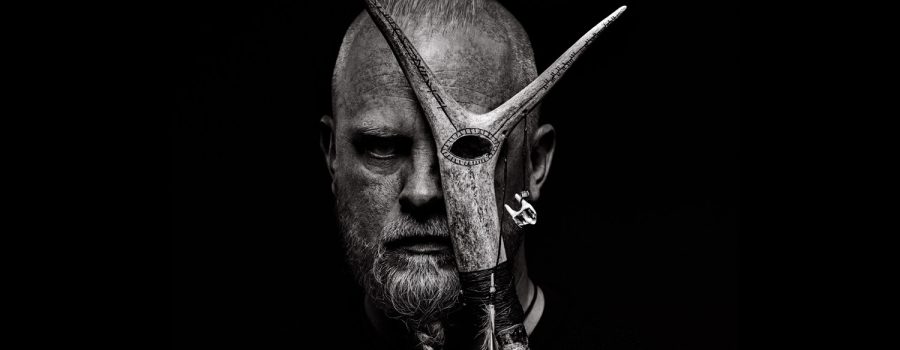
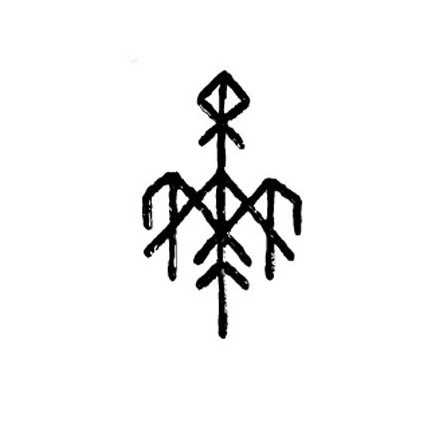

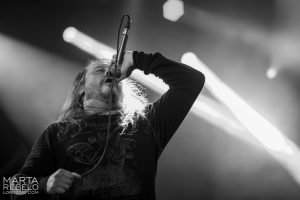
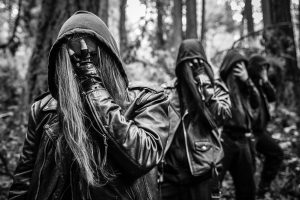
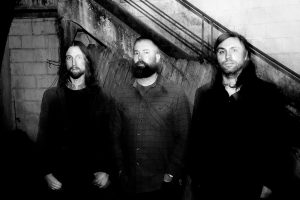
Leave a Reply
Your email is safe with us.